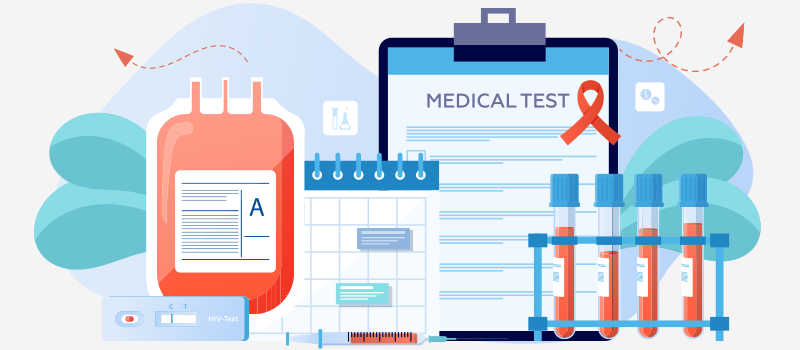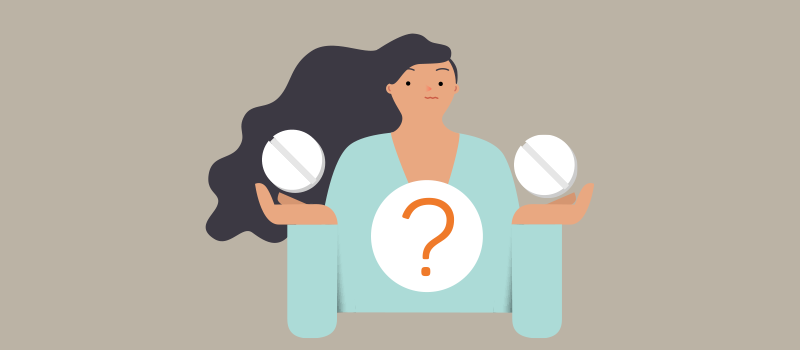What’s the Buzz
The Bee Healthy Blog
Differences Between Chlamydia, Gonorrhea and Syphilis

The Centers for Disease Control and Prevention (CDC) reports there are some 26 million new sexually transmitted infections in the U.S. each year, with over half of them occurring in youth aged 15-24 years old. These infections primarily spread through sexual intercourse with an infected person. Chlamydia, gonorrhea, and syphilis are three common sexually transmitted diseases that share some common symptoms. However, they are not the same.
Please continue reading to learn the differences between common sexually transmitted infections syphilis, chlamydia, and gonorrhea.
What is Chlamydia?
Chlamydia is a common sexually transmitted infection that can affect both men and women.
Incidence: Approximately 1.8 million cases of chlamydia infection are reported every year in the US.
Cause: Overgrowth of bacteria Chlamydia trachomatis.
Transmission: Through unprotected sexual contact during vaginal, anal, or oral sex. Transmission can also occur from an infected mother to her baby during childbirth.
Symptoms: There may be no symptoms. When present, chlamydia symptoms include abnormal vaginal discharge and burning sensation with peeing in women. Men can experience abnormal discharge from the penis, burning while peeing, and less commonly, pain and swelling in the testicles. Both men and women can develop rectal pain, discharge, and bleeding.
Diagnosis: Laboratory tests including urine tests and samples obtained with a vaginal or penile swab.
Treatment: Antibiotics - azithromycin (Z-Pak, Zithromax) and doxycycline (Monodox, Oracea) - 95% of people are cured if they take the antibiotics correctly as prescribed.
What is Gonorrhea?
Gonorrhea is a sexually transmitted infection that can affect both men and women.
Incidence: Approximately 600,000 cases of gonorrhea infection are reported every year in the US.
Cause: Overgrowth of a bacteria called Neisseria gonorrhoeae.
Transmission: Through unprotected sexual contact during oral, anal, or vaginal sex. Also, from an infected mother to her baby during childbirth.
Symptoms: Gonorrhea symptoms include pain or burning sensation with peeing, cloudy or clear discharge from the vagina, painful periods, and vaginal bleeding between periods in women. Men can develop symptoms such as a white/green/yellow discharge from the penis, a burning sensation when peeing, and pain and swelling in the testicles in men. Rectal infections can cause other symptoms such as painful bowel movements and rectal soreness, itching, discharge, and bleeding.
Diagnosis: Laboratory tests, including urine tests and samples obtained on a cotton swab from the vagina, penis, rectum, or throat.
Treatment: Gonorrhea treatment consists of antibiotics, either ceftriaxone given as an injection or oral antibiotics consisting of azithromycin (Zithromax).
What is Syphilis?
Syphilis is a sexually transmitted bacterial infection that can lead to serious complications if left untreated.
Incidence: Approximately 130,000 cases of syphilis are reported in the U.S. each year.
Cause: Bacteria Treponema pallidum.
Transmission: Through unprotected sexual contact during oral, vaginal, or anal sex. Also, pregnant women can transmit the infection to their baby during childbirth.
Symptoms: Syphilis symptoms depend on the stage of the disease (primary, secondary, latent, or tertiary). In primary syphilis, there is usually one or more sores at the original site of the infection, such as around the genitals, anus, rectum, or mouth. The sores are typically firm, round, and painless. People with secondary syphilis can develop symptoms such as include skin rashes, fever, joint pain, and swollen lymph nodes. Primary and secondary syphilis can present with mild symptoms that may not be noticeable. There are no signs and symptoms during the latent stage. Tertiary syphilis is associated with severe symptoms and medical complications involving the heart, brain, and other organs.
Treatment: The preferred antibiotic is penicillin. When diagnosed and treated in the early stages, syphilis can be cured.
Frequently Asked Questions
Are there different types of chlamydia?
There are 3 species of Chlamydia that cause infections in humans. Chlamydia trachomatis causes genital infections while Chlamydia pneumoniae and Chlamydia psittacci cause respiratory infections.
What can be mistaken for chlamydia?
Dozens of conditions cause overlapping symptoms similar to chlamydia, including gonorrhea, bacterial vaginosis, urinary tract infections, and yeast infections, to name a few.
Which one is worse, chlamydia or gonorrhea?
Both untreated chlamydia and gonorrhea can lead to serious health problems such as pelvic inflammatory disease and disseminated gonococcal infection. However, gonorrhea is more likely to cause long-term health complications like infertility.
Can chlamydia turn into gonorrhea?
No, gonorrhea and chlamydia infections are caused by two different organisms, so one cannot turn into the other. However, you can contract chlamydia and gonorrhea together.
Are gonorrhea and syphilis the same thing?
No, gonorrhea and syphilis are not the same things. Both are bacterial infections, but they are caused by different bacteria and have different disease courses. However, both are sexually transmitted infections that spread through unprotected sex. Both can be treated and cured with antibiotics.
Can you have gonorrhea and syphilis at the same time?
Yes, it is possible to have multiple coexisting sexually transmitted infections at the same time. Indeed, both chlamydia and gonorrhea are often present together.
What are the risk factors for developing STIs?
Having multiple sex partners, having unprotected sex, using douches that can kill healthy vaginal bacteria and irritate the vagina, and having a previous sexually transmitted infection are risk factors for STIs. Sexual assault can also increase the risk of chlamydia and gonorrhea as well as other STIs.
What are the risks of untreated chlamydia and gonorrhea?
Untreated chlamydia and gonococcal infections can lead to serious health consequences with permanent damage. Complications in women can include pelvic inflammatory disease, scar tissue formation in the fallopian tubes, ectopic pregnancy (pregnancy outside the uterus or womb), infertility, and chronic pelvic pain and abdominal pain. Complications in men can include epididymitis (infection and inflammation of the tubes attached to the testicles), prostate gland infection, urethritis, and infertility. Untreated gonorrhea can spread beyond the reproductive organs to the blood and joints. This is called disseminated gonococcal infection and is a potentially life-threatening condition. Untreated sexually transmitted infections also increase the risk of contracting HIV or giving HIV to sexual partners.
How soon can I have sex after STI treatment?
You should wait at least seven days after finishing all your medicine before you have sexual intercourse. It is important for your sexual partner or sexual partners also to get tested and treated to prevent you from passing sexually transmitted infections to each other again. Antibiotic resistance is making some STIs hard to treat, so be sure to follow your doctor’s instructions carefully. Your sexual health doctor may ask you and your partner to get retested about three months after initial treatment of a sexually transmitted infection, even if you and your partner received successful treatment and don’t have any symptoms. You should know that you can still get STIs again if you have had them in the past and taken medicine.
References:











SOCIAL